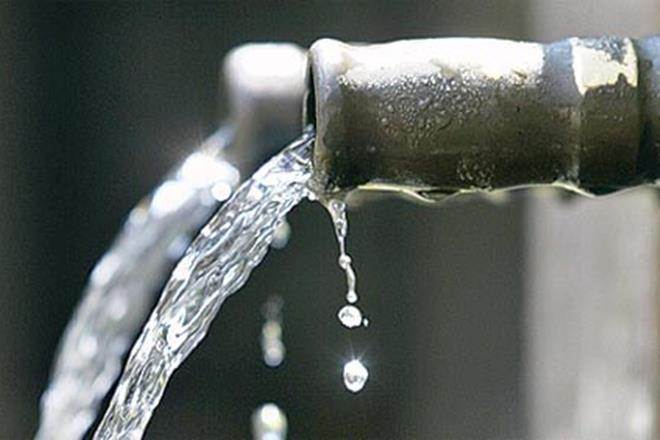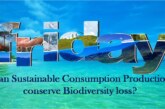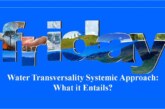Deepak Lakhanpal* Dr. S. K. Sharma* Vimal Belani* Lalit Gupta*
ABSTRACT
India faces crisis and challenges in water resources management. The space & time variability of water resources, in equal water consumption, lack of desired data-information system and trained personnel in dealing with water management call for immediate application of the principal of integrated water resources Management (IWRM) for framing sustainable water resources development strategies which indeed is an inescapable necessity of time. Urbanization, industrialization and agricultural activities present major challenges and obstacles to country water & waste management systems. Focus of water sustainability has therefore to be on meeting current &future water demands of various area sectors.
1. Introduction: Sustainable water management means the ability to meet the water needs of the present without compromising the ability of future generation to do the same. Sustainability also means that water supply will remain consistent, despite climate –change impacts, such as lack of rainfall, drought, or too much rainfall and being flood-resistant.
1.1. Key-elements of Sustainable Water Management: These to include are:
- Use of technological innovations to adopt to changing water patterns and manage water resources effectively.
- Maintaining a balance between water demand and supply especially in agricultural & urban areas.
- Focus is to be on avoidance of over-extraction of fresh water supplies and improvements of water quality.
- Planning for alternative water resources
- Planning for Integrated water resources management (IWRM) with a view to protect & allocate water resources.
- Supply & demand planning for water
2. Distribution of Earths’ Water: Includes;
- Fresh Water as 3% and Saline(Ocean) water as 97%
- Of the fresh water, groundwater is 30.1%, Icecaps& Glacier 68.7%. surface water as 0.3% and others as 0.9%
- Fresh Surface water includes 87% as Lakes.2% as Rivers and 11% as swamps
3. Availability of Water in India: To include
- Annual Flows in Rivers: 1953 BCM
- Annual Utilizable Surface water: 690 BCM
- Utilizable Groundwater: 433 BCM
3.1 Per capita Water Availability & Utilisable Surface Water is as given in table below:
- Table-1: Per capita Water Availability & Utilisable Surface Water
| Year | Population (Million) | Per Capita Water Availability | Per Capita Utilizable Surface Water |
| 1951 | 361 | 5410 | 1911 |
| 2001 | 1027 | 1902 | 672 |
| 2050( Projected) | 1346 | 1451 | 421 |
4. Sustainable Water Resources Development &Management Options:
- Development paradigm & Attitude to Consumerism
- RWH to enhancing Soil Moisture
- Water-shed development
- Improving water-use efficiencies through befitting techniques in irrigation ,Industry and in House-holds
- Recycling & Reuse of Treated Water
- Conjunctive use of Surface & Ground water
4.1 Innovations:
4.1.1. Safe Drinking Water to House-Holds at Affordable Price
- Equity in use of water
- No mortality by water –borne diseases
- Improving water use effectiveness
- Increasing crop productivity per unit of water
4.1.2. Proper Infrastructure for Sustainable Water Delivery of Water Services:
- Cleaning of Rivers, Lakes & water bodies
- Ensuring minimum River flows
- Micro—watershed development & Water Harvesting
- Empowering Women in decision- making on water- use
- Private sector participation
4.2. Issues and Driver Categories: These are as given Table-2 Below:
- Table-2: Issues and Driver Categories
| Issues | Drivers |
| Governance | Decentralization& privatization of Water Rights |
| Social | Values/Equit: Rehabilitation |
| Economics | Industrial Production and “ Pollution”; Water Infrastructure Investments |
| Environmental | Water quality as resource and Environment concern |
| Socio-Economics | Poverty Alleviation; Technology transfer; Water-energy linkage & D innovations |
| Information Data-base | Web-enabled database; monitoring & evaluations; predictions & forecasts; awareness and educational program |
| International | Trans-boundary River Water & Aquifers |
5. Policy Elements & Institutional Requirements: Action Ingredients include:
- Policy reforms and private sector participation
- Enforcement of pollution controls
- Resource mobilization
- Adopting water conservation policies
- Conservation of water bodies
- People awareness to water, environment and health
- Decentralization of responsibilities to local bodies for water supply and sanitation
- Reducing nonpoint water pollution
- Adopting IWRM techniques
- Emphasizing Micro-watershed Management
5.1. Policy-based guide to Community Water well- being: Incudes;
- Water supply availability and demand
- Ecosystem Health: Demand, conditions of water utilities, treatment and Impact
- Infrastructure: Demand, conditions of water utilities, treatment
- Human Health: Access, Reliability and Impact
- Capacity: Techno-financial capacity of community to manage water resources, education and training
6. Groundwater Resources Sustainability Indicators:
- Groundwater indicators are set of qualitative & quantitative variables that focus on ground water resources policy and management. These act as communication tools for planners, policy-makers and public.
- Indicators are to support data for planning and sustainable management of groundwater resources and their future trends. Indicators are basically build around measurable and observed data as listed below:
- Social indicators as ground water exploitability & use
- Economic Indicators as ground water extraction for drinking and agriculture
- Environmental indicators as ground water depletion and pollution factors
These indicators are applied at aquifer, regional and national scales which help to assess the aspects of socio-economic development of a region.
- Groundwater Renewable Resource(m3/year): to be assessed as per CGWB – GEC Mergodology (2015)
- Groundwater Depletion Indicator: It aims at assessing safe groundwater withdrawal without impairing quantity, quality and eco-system needs.
- Challenges’ to Country Water resources Sustainability: Regional Water Distribution Issues: To include:
- Drought & Flood Cycles
- Water Contaminations
- Interlinking of Rivers and water transference
- Wetlands/surface water are largely stressed
- Climate change impacts
7. Sustainable Water Quality: To have sustainable water quality and supply, Country is required to prevent:
- Surface water contamination
- Groundwater aquifer contamination
- Adopting land use-landcover and water conservation practices
7.1. Problem Addresses: Water protection strategies need to emphasize public education & training, well monitoring, enforcements as well as understanding of an areas’ hydrology .Both regulatory and non-regulatory measures are to be used in water protection program
8. Water Intensive Industries: The thermal power plants are highest consumer of water followed by Iron & Steel, Textile and Pulp & paper industries. Heavy water using industries include food, paper, chemicals etc. Water can be saved in industries by creating employees awareness, recycling of water and by installing of water saving equipment.
9. Water Recycling, Treatment and Uses: To include are:
- Primary treatment( Sedimentation)
- Secondary Treatment(Oxidation, disinfection)
- Tertiary treatment (coagulation, filtration, disinfection)
- Uses: as groundwater recharging, industrial cooling, toilet flushing, golf-course irrigation
10. Water Efficiency Measures: To include;
- Reducing water losses(fixing leakages)
- Reducing overall water use
- Reusing treated waste water
- Changing public and employees behavior vs equipment’s towards procedures.
11. Water Auditing & Security Products:
11.1. Water Auditing to Quantify Water Demand &Supply Facilities: These include;
- Water audit kits
- Water meter reading
- Comparing water metering with water bills
- Using water pressure testing devices
11.2. Water Security Products:
- The municipalities and Industrial units need to integrate new water security products into installation projects
- Installing Sensor-based and Timer-based security systems in high risk commercial and industrial building comp to turn off water supply. lexes
- Installing sensor-based shut-off systems sensors to trigger alarm on controls
- Installing Timer-based Sensors to trigger alarm on controls on flow-volumes
12. Sustainability& Efficiency of Water Resources: This section deals with sustainable explanations and solutions to removing water scarcity while ensuring sustainable use & availability for demands of future generations by making supply, demands & water delivery in efficient ways to include the following:
- Delineation of Saline water sources: Such as;
- Delineation of sea water for producing fresh water use for drinking & agriculture purposes of coastal communities
- Desalination of inland Brackish Ground water(BGW) for use of urban and sub-urban communities
- Technologies to be used may include Reverse Osmosis(RO) and Solar-powered desalination as energy & cost-effective processes
- Modern RWH Technique-Modular Rain Tank technology: to improving both collection efficiency and storage capacity to help solve storm water run-off issues by reducing risks of flooding & soil erosion along road & highways, sports complexes and school play grounds.
- Water-Smart Cultivation: Smart & efficient agricultural practices like drip- irrigation and growing of drought-resistant crops towards improving water-retention in soils with the objective of conserving water & increasing resilience to ecosystem.
- Wastewater Treatment & removing contaminants from used water.
- Educating public & youth in promoting water-use & water conservation measures as well as adopting water-saving measures
- Artificial Intelligence (AI) with use of AI-powered models to predicting and detecting water demand and defects in infrastructure. Data-driven approach is to contribute to addressal of water scarcity challenges & sustainable water use issues
- Collaborating with bordering states/countries and adopting Trans-boundary water cooperation and sustainable water management measures
- Sustainable development of water resources have to be a constitutional goal of country & state govts., and developing of digital water-use public services are to cut resource demand & uses
12.1. Strategies for Sustainable Water resources Management: to include;
- IWRM as coordinated measure in River basins
- Urban water Resources Management(UWRM) for urban & suburban communities
- Wastewater Treatment as key-strategy to ensuring water availability for various use-types
- Protection & Restoration of Ecosystem
- Water management to be in participatory mode
12.2. Water Sustainability Solutions: Solution to alleviating water stress include:
- Protecting against depleting & polluting Groundwater Resources
- Safe-guarding the Surface Water resources against pollution by heavy metals by embarking upon bio-remediation measures
- Adopting Solar-power water desalination practices
- State Governments and Central agencies must educate water using communities and organizations about the use of 1974- The Water (Practices & Control of Pollution) Act.
12.3. Challenges & Issues in Water management: to include;
- Non-uniform access to water & resultant lack of adequate infrastructure
- Water pollution to affecting water quality & its availability
- Over-exploitation of water resources
- Lack of water conservation practices
13. Conclusions: Water sustainability is pre-requisite for all terrestrial living forms. Sustainability improves quality of our lives& ecosystem. Sustainable development is crucial for socio-economic development and environmental protection. In order to put available water resources to priority usage, the State water policies should focus on demand management and regulatory aspects of water management.
Innovative water management techniques such as Modular RWH, Desalination, and Recycling& Reuse of water and Managed Aquifer Recharging are crucial for securing access to sustainable water resources. Sustainable development encourages us to conserve & enhance our resource base. Sustainable water resources development thus is largely for the well-being of present and future generations. Conclusively, the future of investigations and experimentations in water resources sustainability rests on a multifaceted understanding of socio-economical, environmental & technological variables.
REFERENCES:
- Grace K.C. Ding and Smita Gosh: Sustainable water management- A Strategy for Maintaining Future water Resources
- Peiyui Li and Jianhua Wu: Water Resources & Sustainable Development
*Deepak Lakhanpal, Chief Engineer, WAPCOS Limited, Gurugram
*Dr. S. K. Sharma – Consultant (Top Level Expert (TLE) WAPCOS Limited and Former Member, Central Ground Water Board (CGWB). Ministry of Jal Shakti, Government of India)
*Vimal Belani – Consultant (Top Level Expert (TLE) WAPCOS Limited and Former Executive Engineer Delhi Jal Board, National Capital Territory (NCT) of Delhi.
*Lalit Gupta- Engineer WAPCOS Limited, Gurugram




